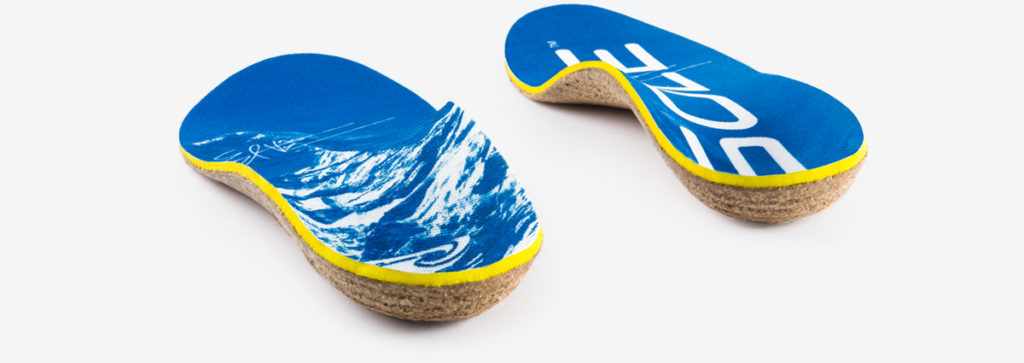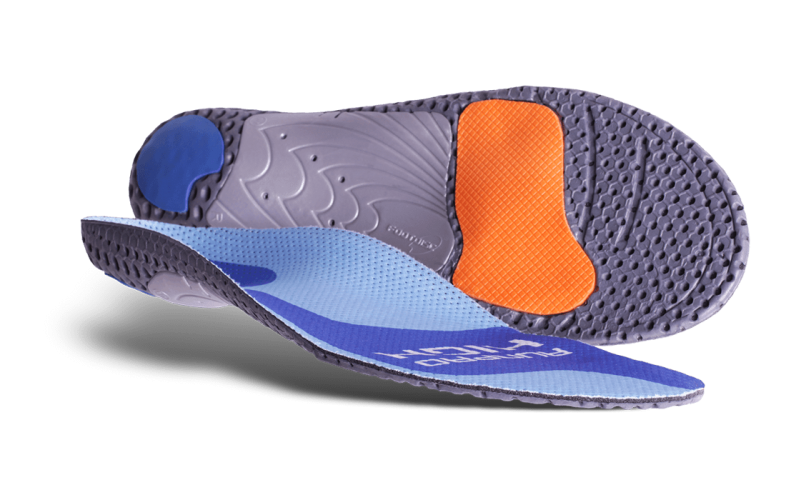In last month’s Roam article, we dissected the Schnee’s Granite 4, clarifying the finer points of performance mountain boot construction. The next logical step—pun intended—is to focus on the intrinsic environment of a hunting boot. This is a topic that could justify an entire book of its own but over the next few articles we’ll attempt to distill this information into approachable and actionable content you can make good use of.
The intrinsic functionality of a boot system is multi-factorial and primarily dependent upon (in no specific order): proper fit, a versatile lacing system, insoles, socks, and foot function. None of these factors operates in a vacuum, one impacts the other in a virtuous cycle to produce the ideal footwear system for hunting in the backcountry. Get this equation wrong and you’re in for a world of problems that can literally ruin your hunt.
In this article, I will cover one of the more misunderstood—yet potentially critical—additions to your boot system: over-the-counter (OTC) insoles. Having worked in the foot care industry for more than a decade I have seen countless OTC insoles used in a variety of applications. Some products are designed to alleviate pain, others to improve performance. There seems to be an endless supply of entrants into this lucrative market but the fact is, there are only a few brands and products worth spending your money on. Many—if not most—OTC insoles are nothing more than padded inserts that provide some extra cushioning. In my opinion, to be considered worthwhile a true OTC insole needs to provide some form of biomechanical benefit that goes above and beyond what the factory insole itself provides. This brings up a critical point about definitions. If we are to understand each other, we need to be speaking the same language.
The term “insole” is without a doubt one of the most confusing terms in the footwear industry. It is used by different manufacturers in different ways to mean different things. For the purposes of this article, I have specifically used the term “OTC insole” to separate the factory insoles or inserts (what the boots or shoes come with) from an insole designed and built by a third party.
A factory insole is the stock insole that comes with the boot or shoe. These can be very well-built and provide extra cushioning, improve moisture management and, in the best cases, are designed to minimize friction within the boot or shoe. They typically do not add any biomechanical functionality such as support, correction or dedicated pressure management components.
An OTC insole is an insole you would buy separately from the boots or shoes themselves. Superfeet would be the best-known example of an OTC insole brand. An OTC insole will also add cushioning and improve moisture management but this is where the similarities between a “factory insole” and an “OTC insole” cease to exist. A well-designed and well-built OTC insole will provide anatomical correction or support (typically for the heel and arch of the foot) but will also often incorporate dedicated pressure management through the utilization of different materials in different sections of the insole—for example in the ball of the foot. OTC insoles can be a critical addition to many people’s boots or shoes.
It should also be noted that an OTC insole is different from a custom orthotic AND different from a customized insole. Custom orthotics are designed and built custom by a trained healthcare professional whereas a customized insole is an OTC insole modified or heated and molded to your foot and therefore “customized”. This is a key differentiation so I will re-iterate. ANY insole taken off the shelf and then “customized” to your feet is not a “custom orthotic”. A custom orthotic is a one-of-a-kind, custom built medical device produced from a cast or mold of your feet. Hopefully, we are now speaking the same language.
There are numerous OTC insole brands to choose from, all claiming to have unique features and benefits. The fact is, there are only a few brands and products worth considering. Each of the brands listed below have been producing high-quality, functional products for years if not decades. To be clear, OTC insoles are not necessary for every person and every foot. Many people do very well with the factory insoles that come with their boots or shoes. If you’re unsure as to whether you should be considering an OTC insole, the best course of action is to find a local, experienced retailer that knows how to help you determine whether an OTC insole would be of benefit. The good news is most companies that make quality, functional OTC insoles offer no-risk trial periods that allow you to test the insoles out on the trails and return them if need be.
Boot Worthy OTC Insoles
Superfeet
Superfeet has been in the OTC insole game for a very long time and makes some of the best products you’ll find on the market. In my experience, Superfeet tends to work best for those that require (or like) an added amount of heel and arch support in their footwear and recently introduced a “Premium” line that offers heel and arch support previously only available in custom orthotics. This is not to suggest they are necessarily a replacement for custom orthotics as there are immense benefits to utilizing a device that was custom built for your unique foot needs but if you like or need added support, this is the brand to start with.
They offer a wide selection of models to suit virtually any foot and are without a doubt the easiest brand to find regardless of where you live. As a quick note, their carbon line has recently been getting some press in the hunting world (we can thank the ultralight movement for this) and it is critical to understand that carbon is not the do-all, magical material some would have you believe. It is an excellent material for some applications but I have made countless custom orthotics out of carbon (and graphite) in my career and it does not work for everyone. Superfeet is an excellent brand to consider if you have higher-volume feet as they tend to take up the least amount of space in a boot or shoe when compared with the other brands.

Sole
Sole is another brand that has been making top-quality OTC insoles for some time. Their insoles tend to be a little more flexible but when placed in a boot or shoe will often feel very supportive as most of their insoles are produced with a more pronounced arch than what you’ll find in a Superfeet product. When added to a boot or shoe this higher arch will make close contact with the foot, providing a sense of enhanced support. Sole is an excellent brand for those with forefoot (ball of the foot) problems, be that pressure points, numbness or pain as they incorporate metatarsal correction into most of their insoles. If you have a higher arch, experience problems in the forefoot or like the feeling of substantial support Sole is an excellent brand to try.

Currex
Currex is one of the more unique brands available, and one I have personally used with great success. As is typical for a European brand (when it comes to footwear and biomechanics), their approach is quite different. They place less emphasis on heel or arch support and more emphasis on dynamic foot function. These insoles do offer “support” but they do so in a more “facilitative” way. They depend less on using the insole material to correct and/or lift the bones of the feet and instead attempt to trigger the appropriate muscle firing sequences to facilitate a more efficient gait (aka walking or hiking) cycle. These insoles also feature a dedicated forefoot (metatarsal) cushioning area through the utilization of a dual-density construction that offers relief for forefoot pressure problems or discomfort. These insoles tend to work best for those that don’t require significant heel or arch support and those that have higher arched feet that are more prone to lower-limb muscle tension and forefoot pressure issues. This brand is tougher to find but worth trying if you can find them.

Aetrex
Aetrex’s Lynco brand is one trusted by healthcare practitioners and professional boot and shoe fitters across North America. This is another brand that uses a softer material to build their OTC insoles and offers dedicated metatarsal support in the form of an excellent met-pad. The arch support provided by these insoles is the lowest in this list but this does not mean they are not excellent OTC insoles and worth considering. That said, if you like or need heel or arch support this is likely not the best brand for you. As a quick note, this is one of those companies that, in my opinion, incorrectly applies the term “orthotic” to refer to their OTC insoles. To be clear, these are OTC insoles NOT orthotics by my definition but are an excellent choice for those that have higher volume feet or feet that don’t require significant additional support. These will work best for those with forefoot (ball of foot) discomfort and/or those that like added cushioning in their boot system.

I hope this article has been helpful in sifting through the numerous available options in the OTC insole market. As with boot selection, the best course of action is to take the time to find—and visit—a professional retailer that offers and has experience with a variety of OTC insole brands for you to test. When needed, the correct OTC insole can be a critical addition to your boot system and can often get your boot fit and function dialed to the point where you’ll feel unstoppable in the mountains. In the coming months, we’ll dive into the finer points of ensuring the internal environment of your boot system is fine-tuned to your foot needs and hunting demands.
Until then, happy hunting!


